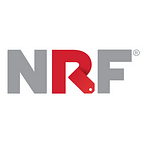The urgency of adaptation
Automation and artificial intelligence are coming to retail. Here’s how the industry can prepare for the Fourth Industrial Revolution.
Kate Ancketill didn’t use the word “might,” “could” or “perhaps” in her session at Retail’s BIG Show, “Trends 2017: Retail Opportunity for the Fast-Changing World and the Human Mind.” Rather, the CEO of retail and hospitality trends consultancy GDR Creative Intelligence laid down an imperative “must.”
“You must adapt,” she said. “You must accept, in my view, that automation is coming. It’s not if. It’s when. You may choose not to move in that direction because you’ve decided to remain rustic and authentic and human, and that’s all fine. But don’t not do it because you didn’t know it was coming.”
Ancketill shared a statistic from Oxford researchers that 47 percent of the U.S. population of workers are at risk of losing a job to automation and artificial intelligence within the next 20 years.
It is what Klaus Schwab, founder and executive chairman of the World Economic Forum, calls the Fourth Industrial Revolution. (The first three revolutions included steam, water and mechanical production equipment in 1784; the division of labor, electricity and mass production in 1870; and electronics, IT and automated production in 1969.) This new revolution is different, and some see it as a fusion of the physical, digital and biological worlds.
It’s happening now because we’ve seen 50 years of Moore’s Law (the doubling of computer power every 18–24 months); the movement of AI into the cloud; exponential growth in machine learning; and AI becoming core to business models.
There is, however, an upside to the Fourth Industrial Revolution — for those willing to be disruptors.
Ancketill flew through nine areas of available technology in which retailers can adapt and get ahead.
New forms of interaction and service
First, there are new forms of interaction and service. These include distributed systems, machine learning and conversational interfaces. It’s been estimated, for example, that the Amazon Echo will be in 40 million homes by 2020, she said.
Adaptable service delivery and manufacturing technologies
Second, there are adaptable service delivery and manufacturing technologies: Think adaptable mechanisms, smart sensors and additive manufacturing. Ancketill gave global examples such as Starship self-driving robots that cover the last few miles of delivery; the CowaRobot R1 suitcase, which syncs with the user’s watch and follows behind; and Zume Pizza, with 56 ovens in a delivery truck that can predict and schedule cooking according to delivery time.
Personalization and autonomous activity
Finally, there’s personalization and autonomous activity, which includes the digitized population, device-to-device networks and pervasive connectivity. In this category, Ancketill pointed to TokyWoky working with L’Oreal Paris to increase engagement — and conversions — with customers answering each other’s questions online, and Scentbird, a subscription-based “Netflix of perfume” that offers designer perfumes for $14.95 a month. There’s also the Back Me Up app from a British insurance company, which allows users to take photos of three items they want insured and pay $20 a month to do so. If they want to change the items covered, they simply switch out the photos.
“It’s utter simplicity and it’s seamless,” she said. “And everything has to be simple moving forward.”
One place retailers can start with technological advances is to consider whether AI could improve their area of service, Ancketill said. If those retailers don’t do it — a competitor certainly will.
This story originally appeared in print as part of STORES Convention Daily on January 17, 2017. Download the digital edition and see more coverage of Retail’s BIG Show 2017.
